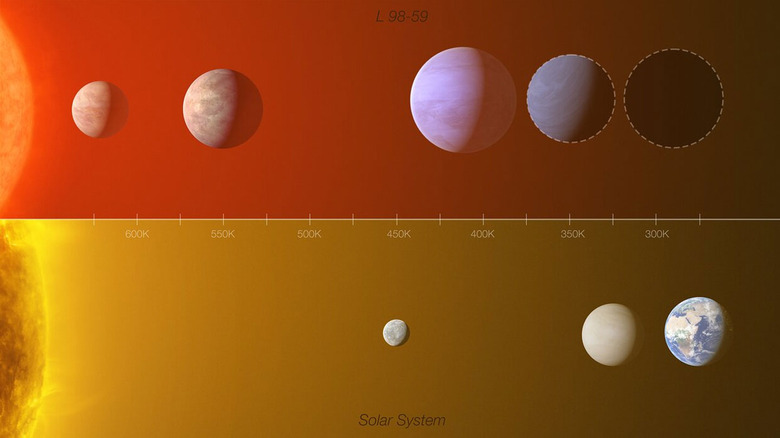ESO VLT Investigates Rocky Exoplanets Orbiting A Distant Star
Astronomers have been using the Very Large Telescope at the European Southern Observatory to observe exoplanets orbiting a distant star called L 98-59. Astronomers observed the L 98-59 system because it and its exoplanets resemble those in the inner solar system. One of the interesting discoveries resulting from the observations is of a rocky exoplanet with half the mass of Venus.
Astronomers say it's the lightest exoplanet ever to be measured using the radial velocity technique. They believe the planet could orbit in the habitable zone of the star. It's a possibility that the system planets have an atmosphere that could protect and support life as we know it. The planetary system is called L 98-59 after its parent star and will be a target for future observations for studying exoplanet atmospheres.

The star is 35 light-years away, quite close on a cosmic scale. Using the VLT, astronomers could infer that three of the planets may have water in their interiors or atmospheres. Estimates are that the two planets closest to the star are likely dry but could have small amounts of water. The third may have water constituting up to 30 percent of its mass, making it an ocean world.
The team also discovered new "hidden" exoplanets not previously discovered in the planetary system. They have discovered a fourth planet and suspect there is a fifth planet in the system. That fourth planet is believed to be in the zone where liquid water could exist on its surface.
The study is a technical breakthrough because astronomers were able to determine the innermost planet in the system has just half the mass Venus using the radial velocity method. The planet is the lightest exoplanet ever measured using that technique, which calculates a star's wobble caused by the gravitational tug of its orbiting planets.
